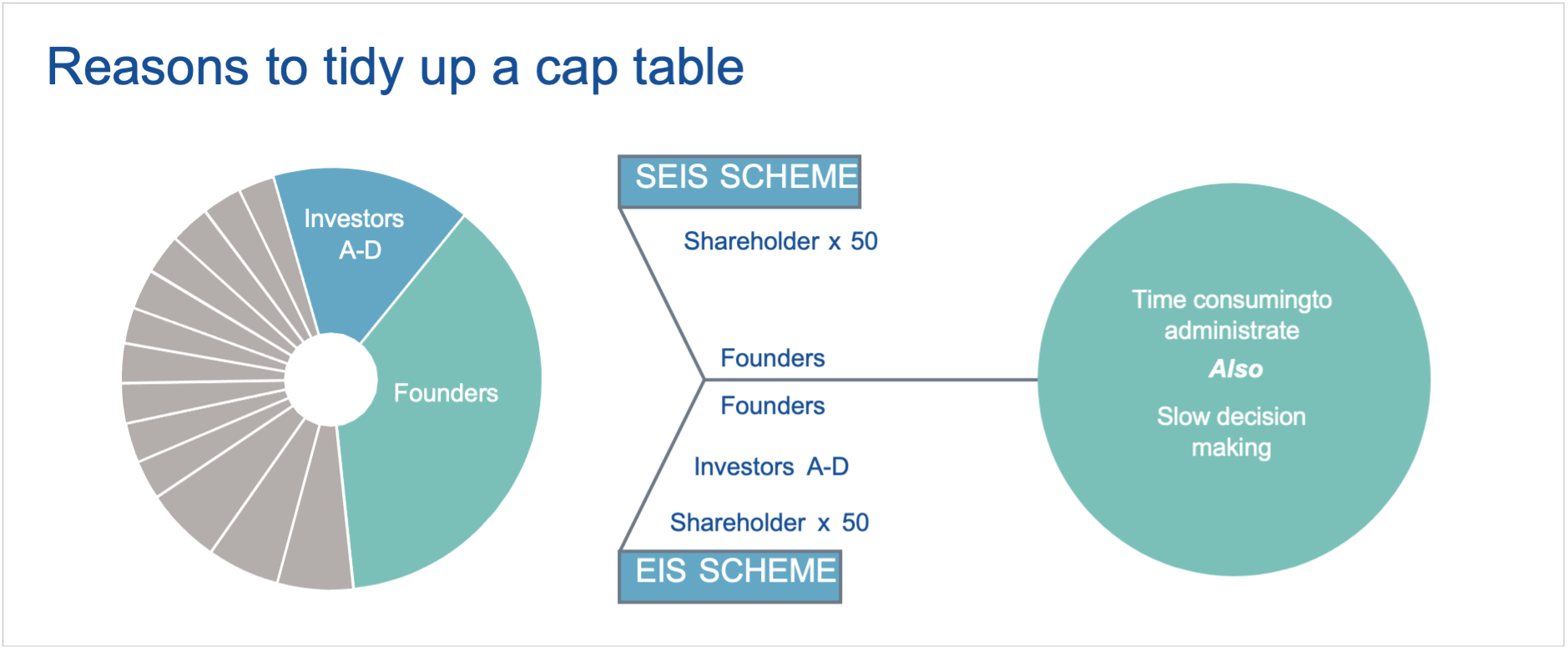When you start up a business, attracting small investors is great, right? They give you much-needed money. In exchange, you give them equity as compensation. It’s a win-win situation.
Perhaps you signed up for a SEIS (targeted at start-ups and very early-stage companies) or an EIS (aimed at larger and more mature companies.) Both of which provide investors who invest in smaller, unquoted trading companies like yours with tax incentives in the form of income tax and capital gains tax reliefs.
The problem arises when you end up with lots and lots of small shareholders. Because the more shareholders you have in your cap table, the more difficult to align interests. Therefore, the more difficult it is for you to execute decisions.
Then there’s the problem that too many small shareholders who don’t bring additional value beyond the cash they contribute, put off new investors who can bring that much-needed value.
Beyond that, you have the problem of new investors diluting the stakes of existing shareholders.
So as you can see, even a small amount of equity dilution can be painful. It becomes a mess. So sooner rather than later, you will have to consider tidying up your cap table.

Because when you tidy up your cap table, it makes can make it easier for you to do business and increase your own ownership.
You’ll benefit from:
- Streamlined decision making. Decreasing the hassle and cumbersome administration leads to more time to concentrate on growing your business
- Greater transparency
- Fewer shareholders means increased value for the remaining shareholders
How can investors exit a SEIS/EIS scheme?
Investors must hold shares for a minimum three-year holding period from the SEIS/EIS share issue date before they can realise the returns of their investment.
After that, the exit strategies for SEIS/EIS investors are like those used for standard private companies. By this, I mean.
- MBO
- Trade sale
- Listing
- Share buyback
How can I raise finance to buy out my SEIS/ EIS longtail investors?
You can fund each of these scenarios with non- dilutive, specially structured private debt finance.
And if you are not overleveraged and cash positive, you can use private debt to fund a partial cash-out of your business to buy out your longtail investors.
If you have found this useful read the full e-book below

